Easy Coconut Pound Cake
This moist and buttery Coconut Pound Cake is loaded with coconut, topped with a glossy chocolate glaze, and finished with a sprinkle of coconut flakes, simple, rich, and irresistible for your afternoon tea party.
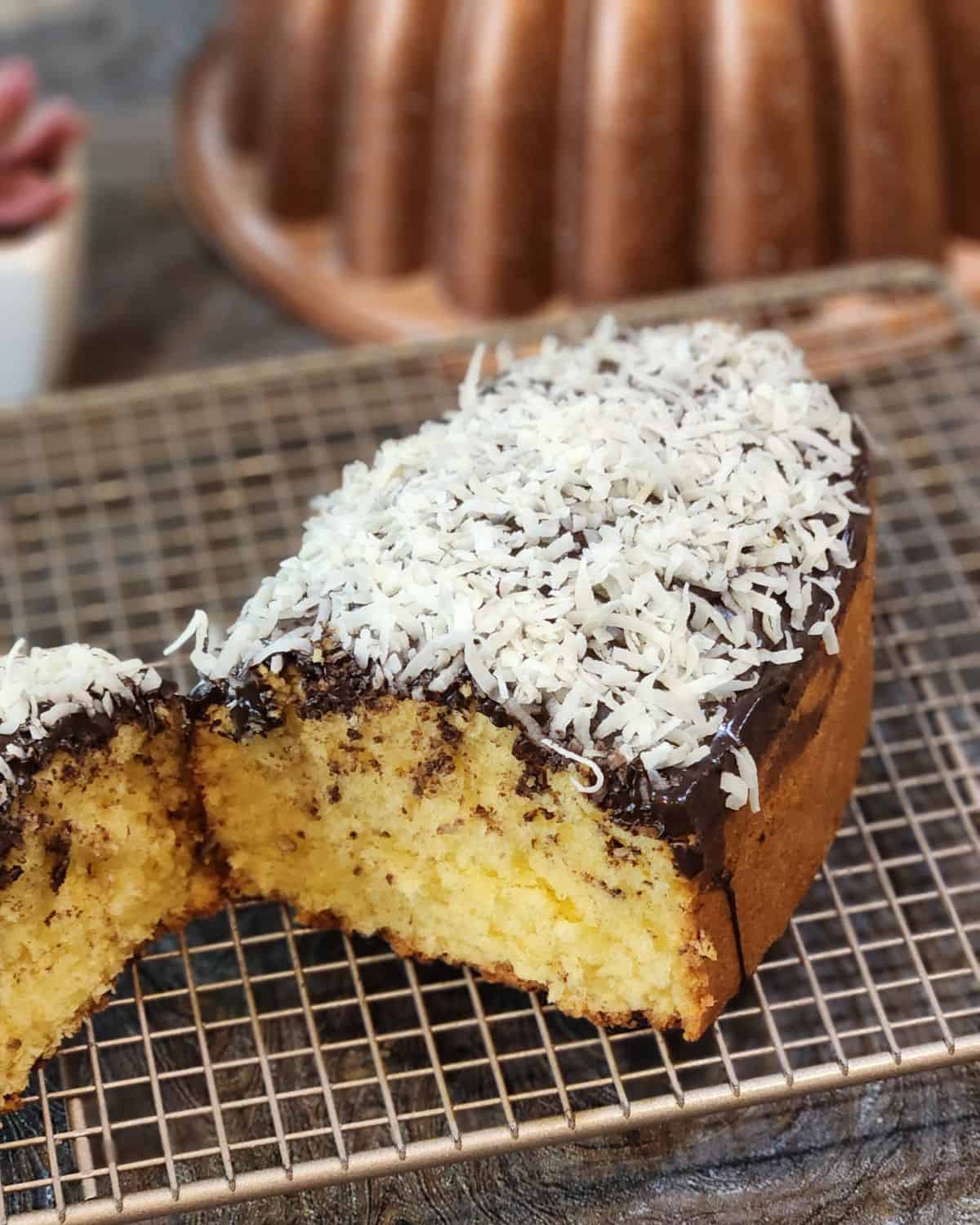
If you’re searching for the perfect coconut pound cake, this recipe delivers everything you love in a buttery loaf—moist, rich, and full of coconut flavor. Sometimes called a coconut butter cake, this easy coconut cake recipe is topped with glossy chocolate glaze and a snowy layer of coconut flakes, making it as beautiful as it is delicious.
Like my Thai Butter Cake, Almond Butter Cake, Strawberry Cream Cheese Butter Cake, and Lemon Butter Cake, this cake is simple to make yet perfect for tea time, special occasions, or just a sweet treat any day of the week.
Why You Will Love This Recipe
Recipe Ingredients
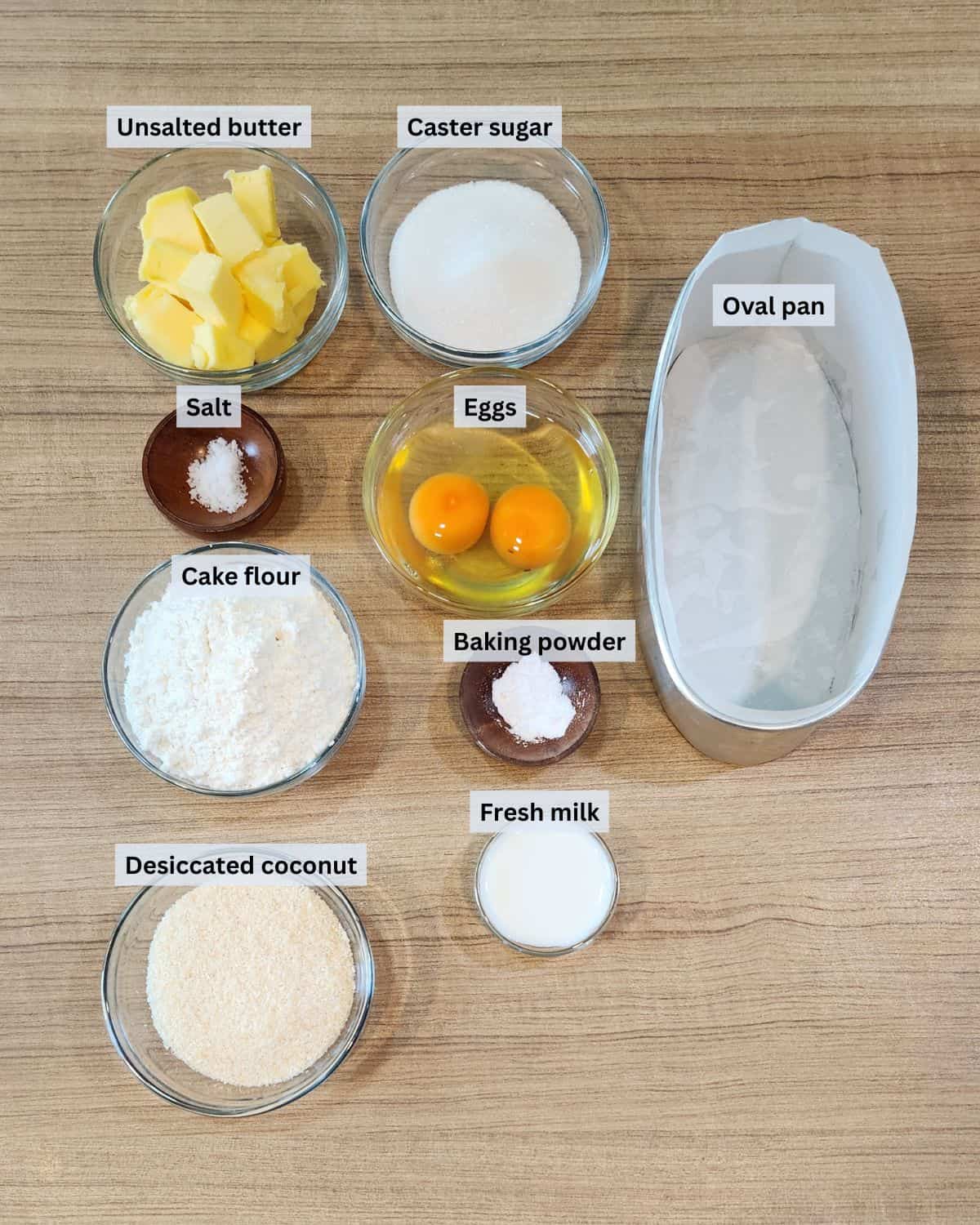
Ingredient Notes
Butter – Use a good-quality unsalted butter for the best flavor. I used Anchor this time, but any premium brand works well. A richer butter adds moisture and enhances the taste of the cake.
Caster sugar – Caster sugar dissolves more easily into the batter than regular granulated sugar, giving the cake a finer crumb. If you don’t have caster sugar, you can grind regular sugar until fine.
Desiccated coconut – I use desiccated coconut because it helps extend the cake’s shelf life.
How to Make Coconut Pound Cake
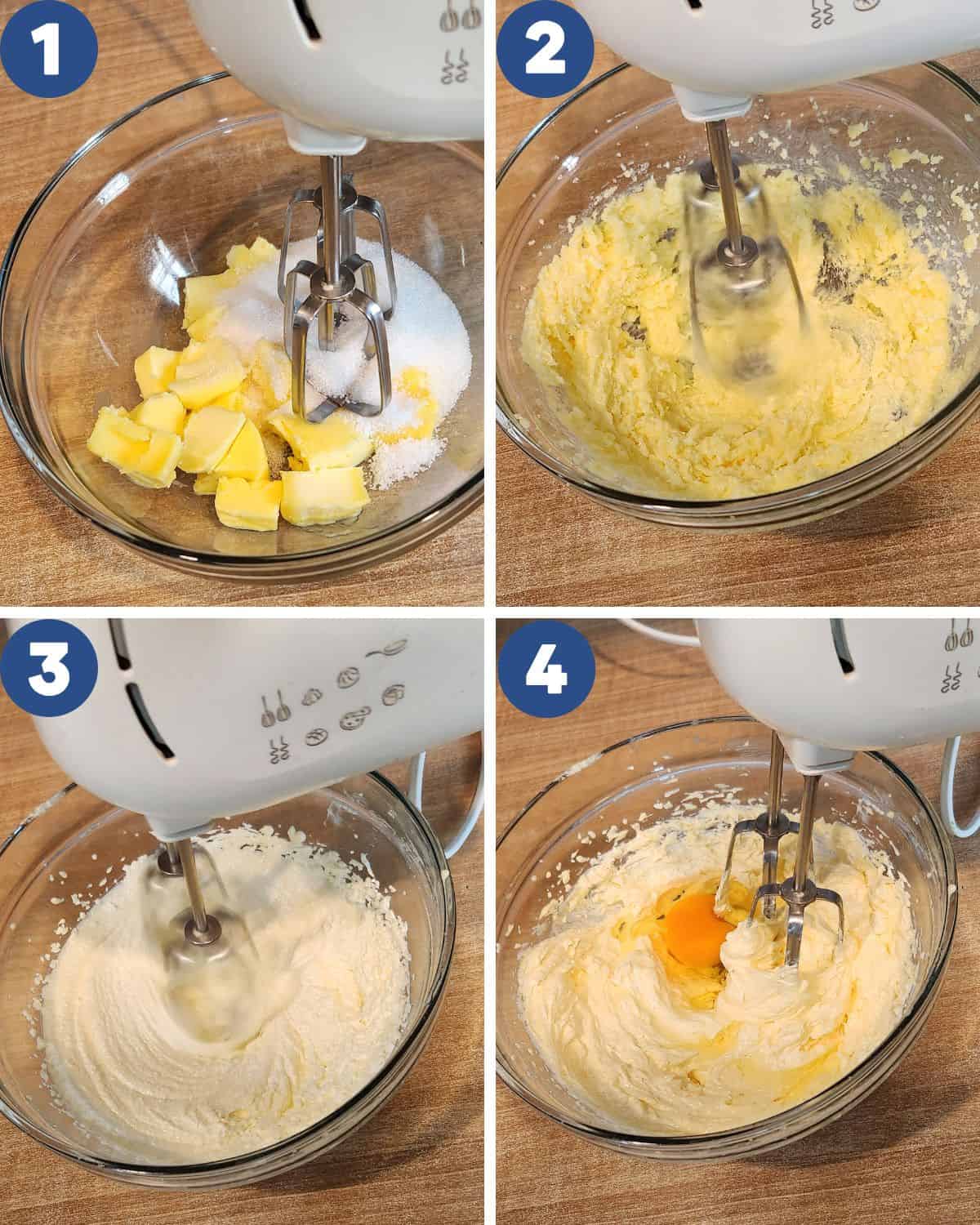
STEP 1. Preheat the oven to 356°F (180°C). Grease a loaf/pound cake pan and line it with parchment. In a bowl, beat butter, caster sugar, and salt until pale and fluffy (Images 1, 2, 3). Add the eggs one at a time, beating well and scraping the bowl after each addition (Image 4).
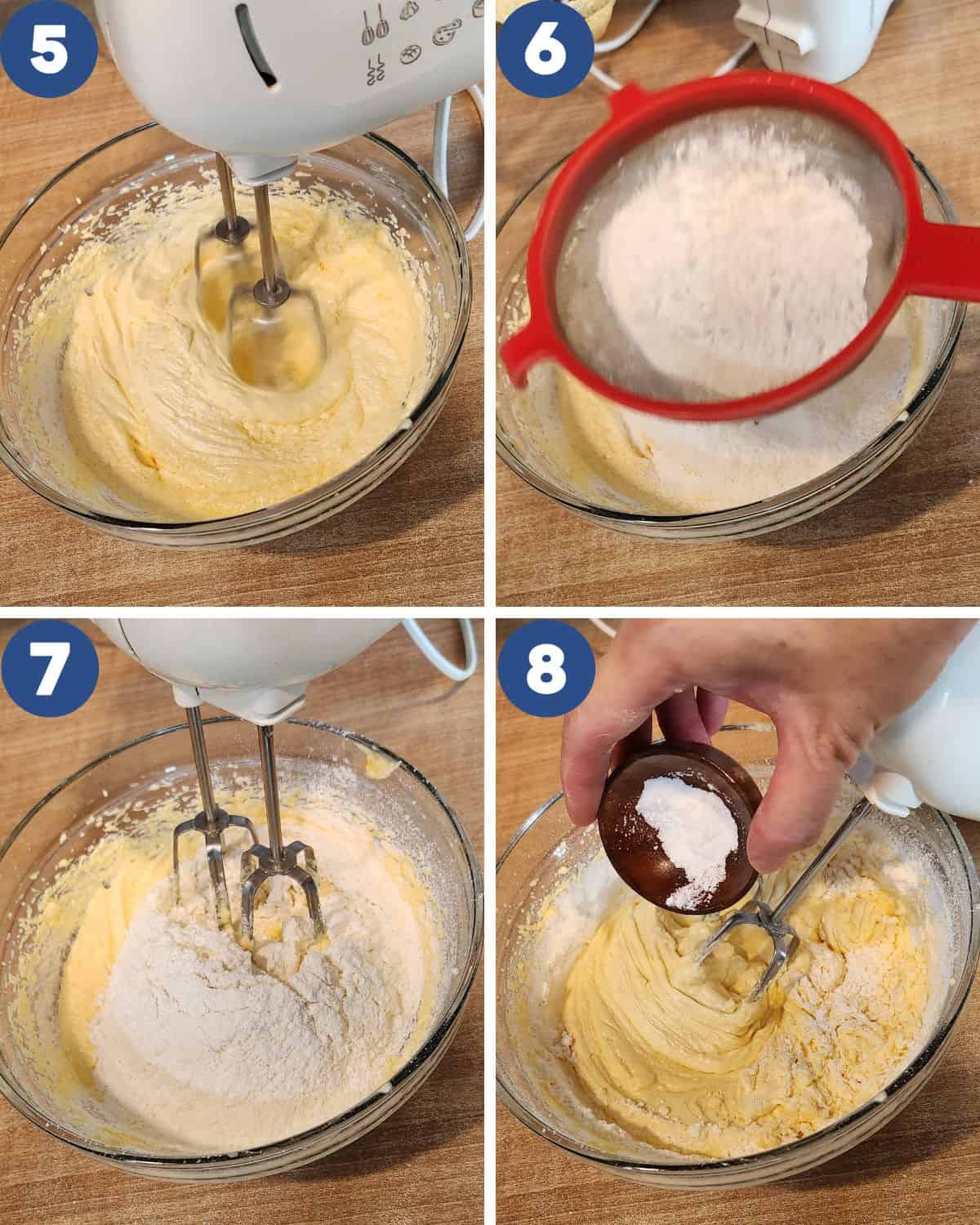
STEP 2. Continue mixing until the butter–egg mixture is fully emulsified (Image 5). Sift in cake flour (Image 6). Mix on low speed so the flour does not fly around (Image 7). Then add baking powder (Image 8).
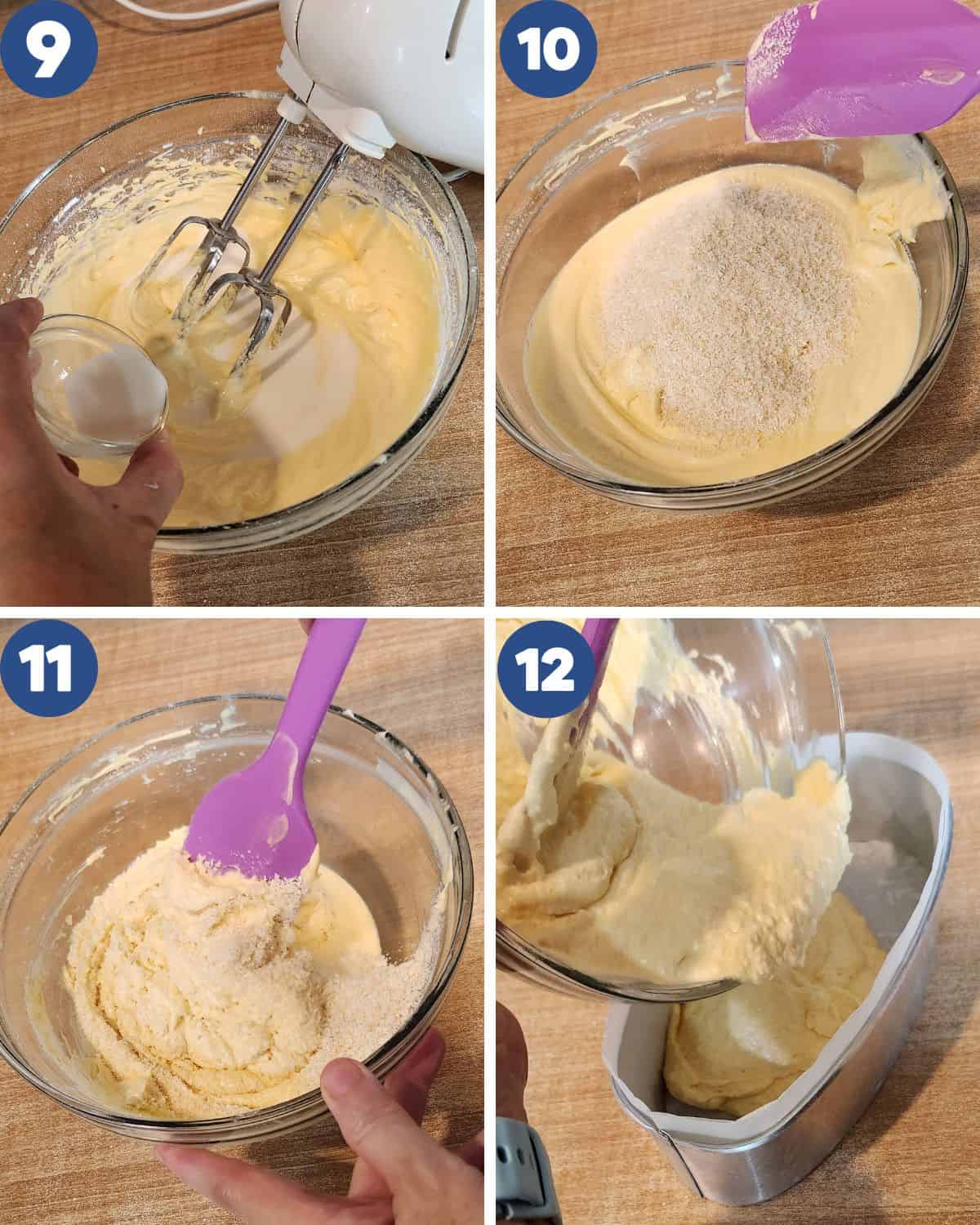
STEP 3. Pour in the fresh milk to loosen the batter (Image 9). Add desiccated coconut and fold with a spatula until evenly distributed (Images 10, 11). Transfer the batter to the prepared pan (Image 12).
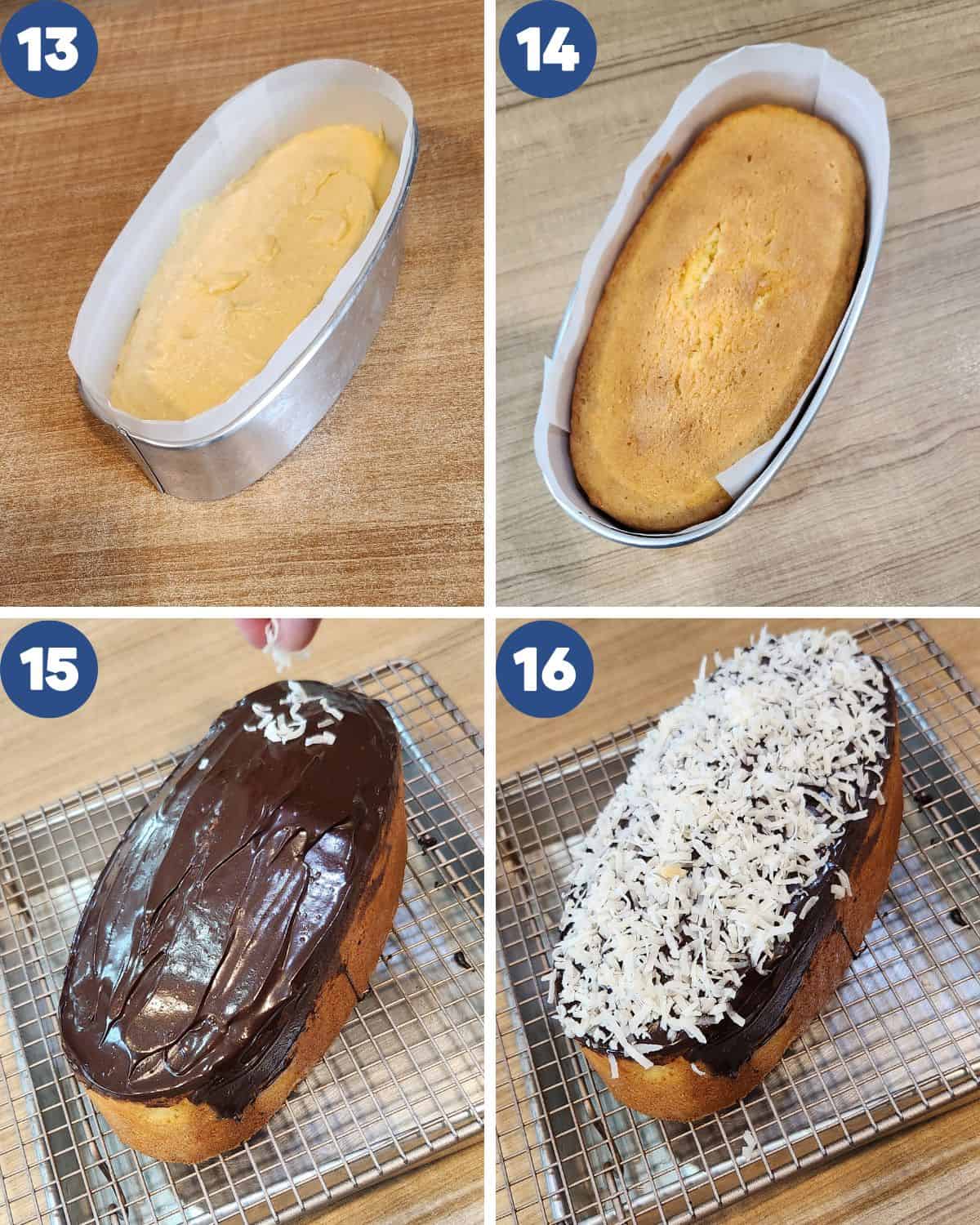
STEP 4. Smooth the surface with a spatula (Image 13). Bake for about 50 minutes (45–55 minutes depending on your oven) until the top is golden and a skewer comes out clean (Image 14). Cool 10 minutes in the pan, then lift onto a wire rack to cool completely. Pour over melted chocolate (Image 15) and sprinkle coconut flakes on top (Image 16). Slice and enjoy!
Pro Tips
- Bring butter and eggs to room temperature – this helps the batter emulsify properly and gives the cake a tender crumb.
- Use good-quality butter – since this is a butter-based cake, a premium butter makes a big difference in flavor and moisture.
- Don’t overmix after adding flour – once the dry ingredients are in, mix on low speed or fold gently to avoid a dense cake.
- Toast the coconut first (optional) – lightly toasting desiccated coconut enhances its nutty flavor and aroma.
- Check your oven early – every oven bakes differently; start checking at the 45-minute mark with a skewer test.
- Cool completely before glazing – if the cake is even slightly warm, the chocolate glaze will melt and slide off.
- For clean slices – dip a sharp knife in hot water, wipe dry, then slice through the glaze and cake smoothly.
Serving Suggestions
This Coconut Pound Cake pairs beautifully with refreshing drinks and tropical-inspired desserts. Enjoy a slice with a soothing cup of Butterfly Pea Tea or a creamy Butterfly Pea Latte. You can also serve it alongside fragrant Lemongrass Pandan Tea or a warming Lemon Ginger Tea, all of which complement the cake’s tropical coconut flavor.
For a more indulgent spread, pair this cake with Asian-inspired desserts like Pulut Hitam, Peach Gum Dessert, or Mango Sago. The combination of rich, buttery cake with lighter, fruity sweets makes for a balanced and memorable treat.
FAQs about Coconut Pound Cake
They’re very similar! A coconut pound cake is typically denser with a moist, buttery crumb, while “coconut butter cake” often refers to a lighter, fluffier version. Both are rich with coconut flavor and can be topped with coconut flakes.
Yes, you can substitute with fresh grated coconut, but the cake will have a shorter shelf life and may be slightly more moist. Desiccated coconut keeps the cake light and stores better.
Use room-temperature butter, don’t overmix the batter after adding flour, and store the cake in an airtight container. A drizzle of chocolate glaze also helps lock in moisture.
Absolutely! This cake tastes even better the next day as the flavors settle. You can bake it one day ahead and glaze it just before serving.
A standard 6×3.5-inch loaf pan works well for this recipe. Baking time may vary slightly depending on your pan size.
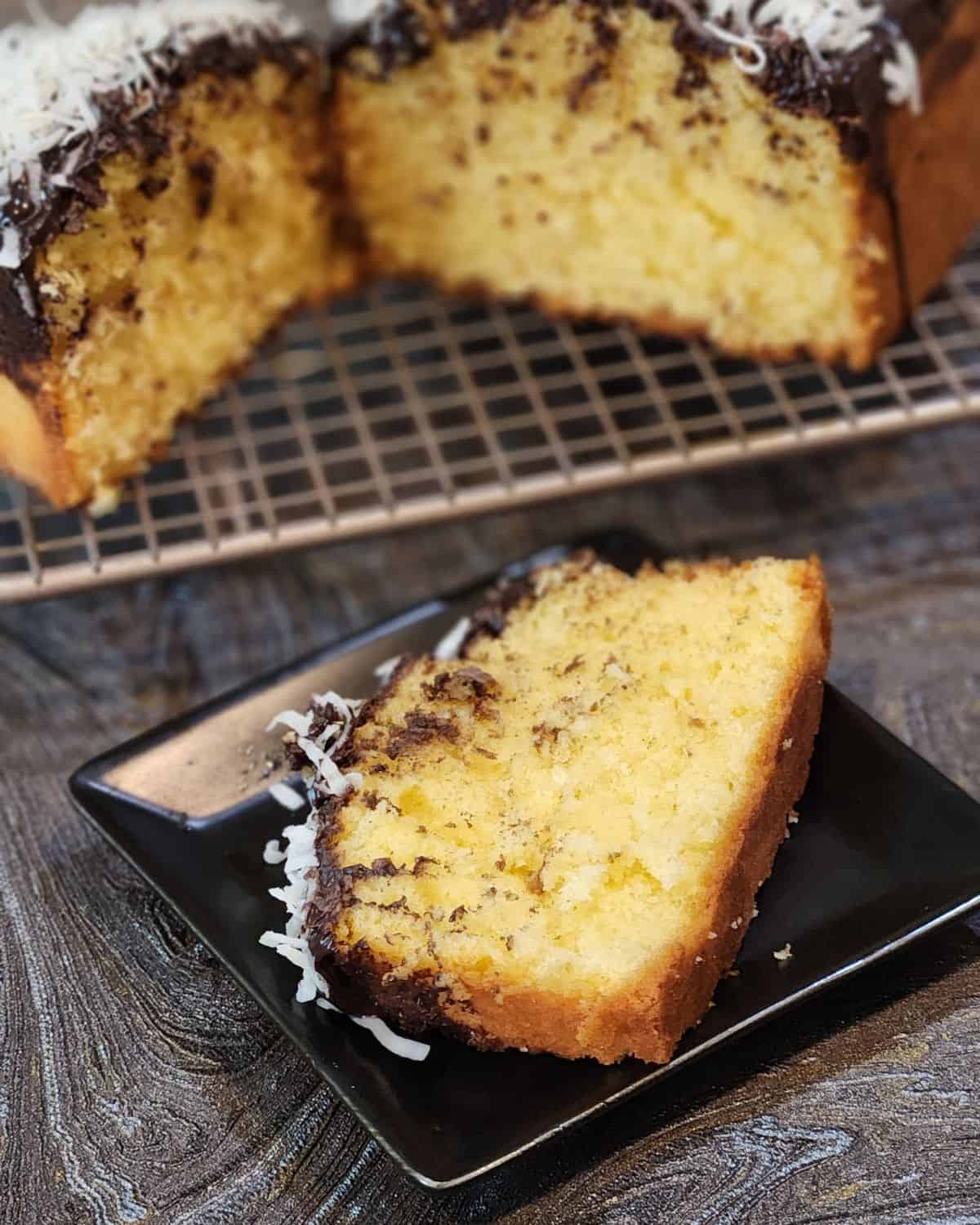
Storage
This coconut butter cake can stay fresh for up to 4 days in room temperature. Just remember to keep it in a closed container. If you keep it in the chiller, it can stay fresh longer.
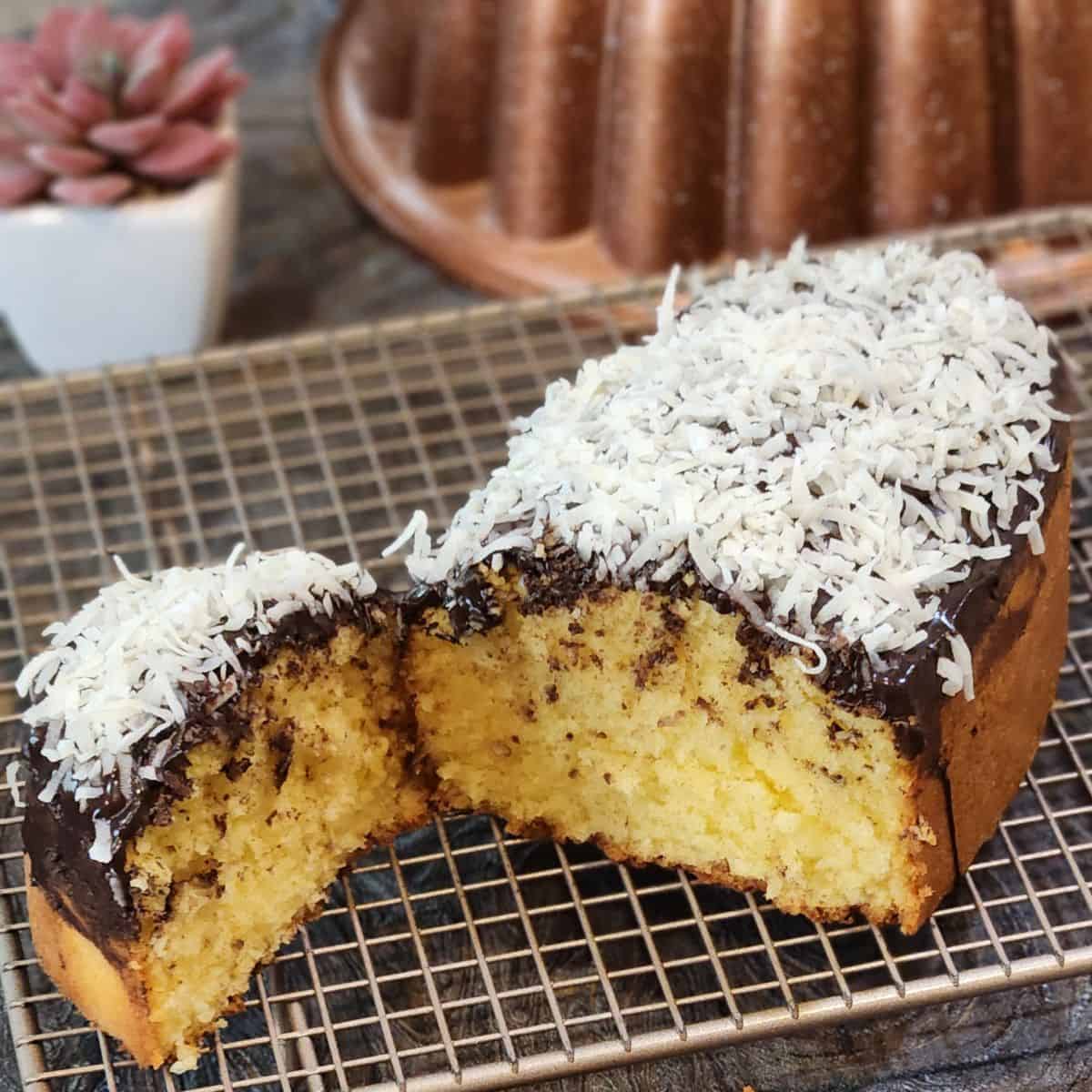
Coconut Pound cake
Equipment
- 1 baking pan 6×3.5 inch
Ingredients
- 100 gr unsalted butter
- 85 gr powdered sugar
- 2 gr salt
- 2 eggs
- 100 gr cake flour
- 30 gr desiccated coconut
- 20 ml fresh milk
- 2 gr baking powder
Decoration
- 100 gr chocolate glaze
- 30 gr coconut flakes
Instructions
- Preheat the oven to 356°F (180°C). Grease a loaf/pound cake pan and line it with parchment. In a bowl, beat butter, caster sugar, and salt until pale and fluffy. Add the eggs one at a time, beating well and scraping the bowl after each addition.
- Continue mixing until the butter–egg mixture is fully emulsified. Sift in cake flour. Mix on low speed so the flour does not fly around. Then add baking powder.
- Pour in the fresh milk to loosen the batter. Add desiccated coconut and fold with a spatula until evenly distributed. Transfer the batter to the prepared pan.
- Smooth the surface with a spatula. Bake for about 50 minutes (45–55 minutes depending on your oven) until the top is golden and a skewer comes out clean. Cool 10 minutes in the pan, then lift onto a wire rack to cool completely. Pour over melted chocolate and sprinkle coconut flakes on top. Slice and enjoy!
Video
Notes
- Bring butter and eggs to room temperature – this helps the batter emulsify properly and gives the cake a tender crumb.
- Use good-quality butter – since this is a butter-based cake, a premium butter makes a big difference in flavor and moisture.
- Don’t overmix after adding flour – once the dry ingredients are in, mix on low speed or fold gently to avoid a dense cake.
- Toast the coconut first (optional) – lightly toasting desiccated coconut enhances its nutty flavor and aroma.
- Check your oven early – every oven bakes differently; start checking at the 45-minute mark with a skewer test.
- Cool completely before glazing – if the cake is even slightly warm, the chocolate glaze will melt and slide off.
- For clean slices – dip a sharp knife in hot water, wipe dry, then slice through the glaze and cake smoothly.

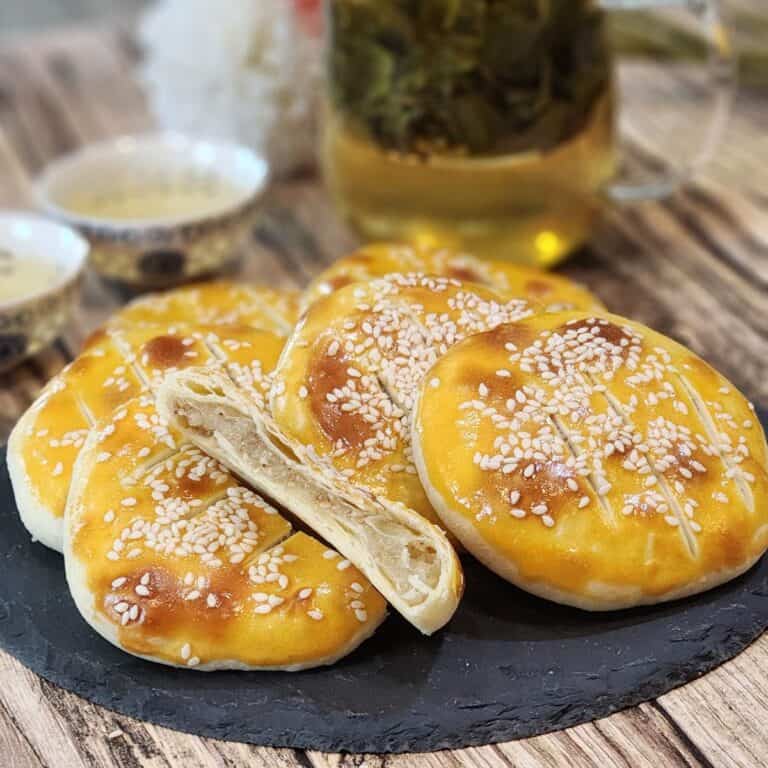

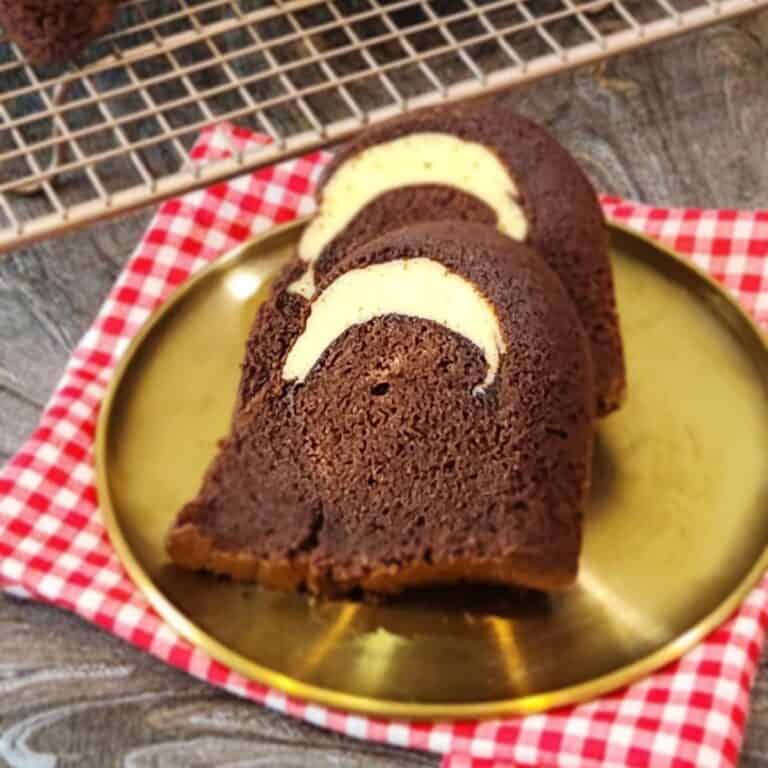






I love the combination of coconut, almond, and chocolate in this cake. It is so easy to make and very quick to prepare, too!